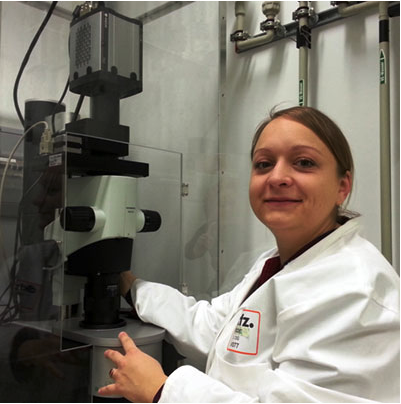Members Login

Channels
Special Offers & Promotions
The German Cancer Research Center, the Tews Laboratory, Uses the LaVision BioTec UltraMicroscope for Research into the Molecular Mechanisms of Tumor Invasion
LaVision BioTec, developers of advanced microscopy solutions for the life sciences, report on the work in the Tews Laboratory which is studying the molecular mechanisms of tumor invasion using an UltraMicroscope for enhanced imaging of cells.
 Ultramicroscopy forms a toolkit with magnetic resonance imaging (MR-UM) to provide insight into the dynamics of glioma angiogenesis.
Ultramicroscopy forms a toolkit with magnetic resonance imaging (MR-UM) to provide insight into the dynamics of glioma angiogenesis.
Dr Julia Bode is a post-doctoral researcher studying the molecular mechanisms of tumor invasion in the Tews Laboratory. This is a part of the famous Schaller Research Group at the University of Heidelberg and the DKFZ, the German Cancer Research Center. The focus of her research is glioblastoma, the most aggressive brain tumor, the prognosis of which is poor for patients reflected by a median survival time of about 14 months.
The invasive nature of glioma cells mainly accounts for their resistance to current treatment modalities, as the diffusely infiltrating tumor cells, which evade surgical resection and survive treatment, inevitably give rise to reoccurring tumors. The Group is interested in lysophospholipid signaling which depends on the extracellular matrix environment in vitro and in vivo. They also analyze tumor cell-specific signaling of respective G-protein coupled receptors (GPCRs) regulating cell division, migration and invasion. For this, they use the UltraMicroscope II from LaVision BioTec.
The background of the Group is in analysing tumor growth, invasion and volume in vivo using techniques including Bioluminescence Imaging (BLI), Single Photon Emission Computed Tomography (SPECT) and Magnetic Resonance Imaging (MRI). The resolution of these techniques is not high enough to detect single cells. With the Ultramicroscope, they are able to track single tumor cells in the whole mouse brain and can investigate structures that are favoured by tumor cells for invasion. Prior to selecting the UltraMicroscope, we used 2-Photon Microscopy to detect tumor cells. However, key advantage of the Ultramicroscope is to see the tumor cells in their natural environment in the whole brain. They are able to locate cells in 3-dimensions in the whole organ and do not have to prepare single slices.
Dr Bode describes her experiences using the UltraMicroscope. She says “The resolution of the Light Sheet Microscope is high enough to see single tumor cells and to analyze their co-localization to brain structures or compartments. We can use whole organs, mainly mouse brains, but in addition, we can use half rat brains or smaller samples e.g. tumor material. After the adjustment of settings, it is relatively easy to analyze different samples for subsequent comparison. Samples can be inserted in the sample holder in different directions therefore allowing you to have variable insights in the tissue. The UltraMicroscope prevents samples from getting photo-bleached and fluorescence signals stay intact in the sample.
This research has been the subject of a highly recognized research publication describing the combination of MRI and Ultramicroscopy as a tool kit (MR-UM) in the assessment of the dynamics of glioma angiogenesis.
Media Partners


